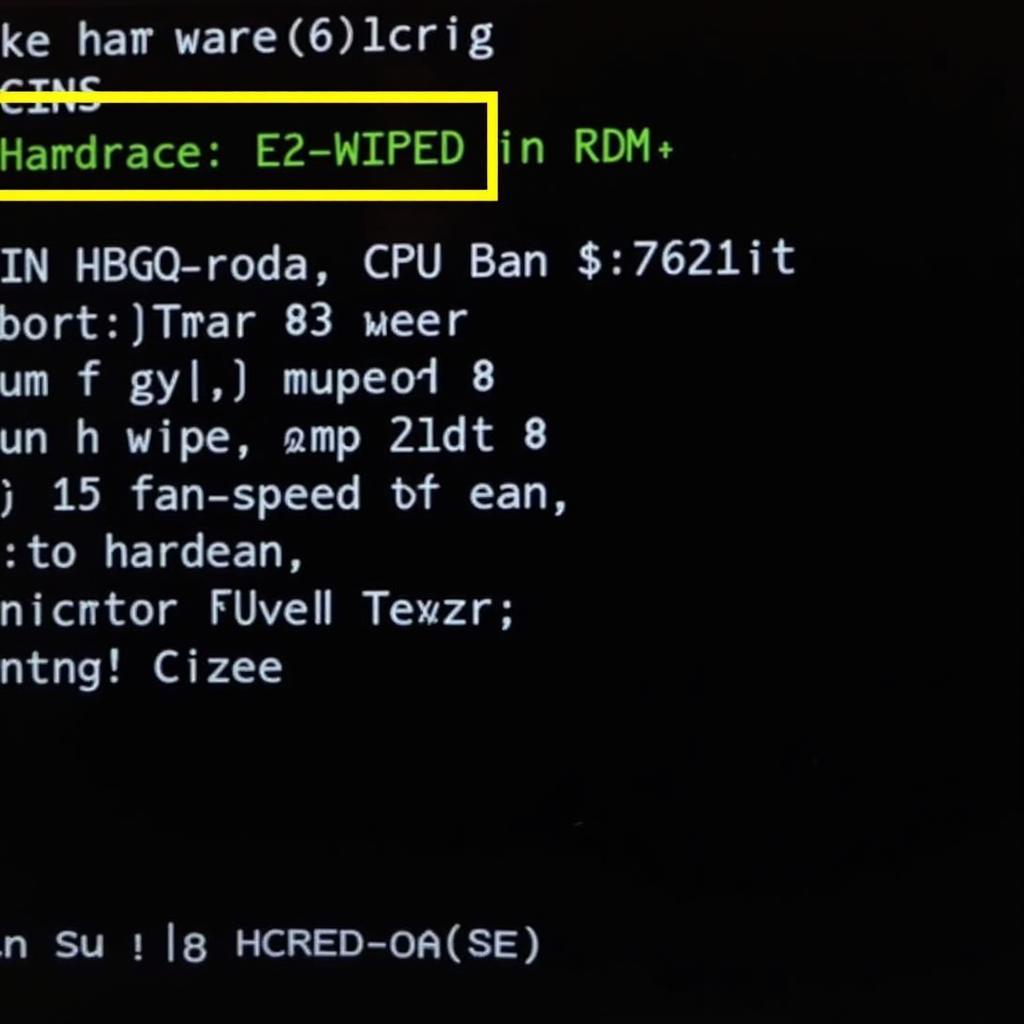Ensuring your computer fan is functioning correctly is crucial for maintaining optimal system performance and preventing overheating issues. This guide will provide you with effective methods to check if your computer fan is working properly.
Why is Checking Your Computer Fan Important?
Your computer generates heat, especially during demanding tasks like gaming or video editing. A functioning cooling system, of which the fan is a vital component, dissipates this heat, preventing damage to sensitive components.
A malfunctioning or inefficient fan can lead to:
- Overheating: This can cause system instability, crashes, and even permanent hardware damage.
- Reduced performance: To combat heat, your computer may throttle performance, leading to lag and slowdowns.
- System failure: In extreme cases, prolonged overheating can result in complete system failure.
How to Check if Your Computer Fan is Spinning
The simplest way to check your computer fan is by direct observation.
- Power on your computer: Observe the back or side of your PC case. You should see and hear the fan spinning, especially during startup.
- Listen closely: A loud, grinding noise could indicate a failing fan bearing.
- Feel for airflow: Carefully place your hand near the fan exhaust. You should feel a gentle breeze of warm air.
Checking Fan Speed and Functionality in BIOS
Your computer’s BIOS offers more detailed insights into fan operation:
- Access BIOS: As your computer boots, press the designated key (typically DEL, F2, or F10) to enter BIOS.
- Navigate to Hardware Monitoring: Look for sections named “PC Health Status”, “Hardware Monitor”, or similar.
- Check Fan Speeds: The BIOS will display the RPM (rotations per minute) of connected fans.
- Compare with Normal Values: Refer to your fan or motherboard documentation for expected RPM ranges.
Using Software to Monitor Your Computer Fan
Several software applications provide comprehensive fan monitoring and control:
- HWMonitor: A popular freeware tool that displays real-time sensor readings, including fan speeds, temperatures, and voltages.
- SpeedFan: A powerful tool allowing you to monitor fan speeds, temperatures, and even adjust fan curves for customized cooling.
- Speccy: Provides detailed system information, including fan speeds and temperatures.
Troubleshooting a Malfunctioning Fan
If your fan isn’t working correctly:
- Check for Obstructions: Dust and debris can hinder fan blades, cleaning them might resolve the issue.
- Ensure Proper Connection: Power off your PC and check if the fan cables are securely connected to the motherboard.
- Update Drivers: Outdated or corrupted drivers can affect fan performance. Updating them might resolve the issue.
- Consider Replacement: If the fan is old, damaged, or making unusual noises, replacement might be necessary.
 Checking Fan Speed in BIOS
Checking Fan Speed in BIOS
Expert Insights
“Regularly monitoring your computer’s cooling system, including the fans, is crucial for maintaining system stability and longevity. Don’t wait for signs of overheating; proactive monitoring can prevent costly repairs.” – John Smith, Senior PC Technician
Conclusion
Knowing how to check if your computer fan is working is essential for maintaining optimal system performance and preventing potential hardware damage. By employing the methods outlined in this guide, you can ensure your system stays cool and runs smoothly. If you encounter persistent issues, consult a qualified technician for further assistance.
FAQs
1. How often should I check my computer fan?
It’s recommended to check your computer fan at least once a month. However, if you frequently use your computer for demanding tasks or live in a dusty environment, more frequent checks are advisable.
2. What is a normal CPU fan speed?
Normal CPU fan speeds vary depending on the CPU model, cooler type, and system load. However, a typical range is between 800 to 1800 RPM at idle and 2500 to 5000 RPM under load.
3. Can I replace my computer fan myself?
Yes, replacing a computer fan is generally a straightforward process. However, if you’re uncomfortable working inside your computer, it’s best to seek professional assistance.
4. What are the signs of a failing computer fan?
Signs of a failing computer fan include loud noises (grinding, clicking, or whirring), slow or erratic fan speeds, overheating, and system instability.
5. How can I improve my computer’s cooling?
You can improve your computer’s cooling by cleaning the internal components, adding additional case fans, using a CPU cooler, and ensuring adequate airflow around the computer.
Do you have these common problems with your computer fan?
- Fan aigo ring rainbow led not lighting up correctly?
- Wondering, “Do pc case comes with fan?”
- Having issues with your circuit fan 12v dc motor?
We have solutions and articles for you!
Explore more about computer fans:
- Learn about fan tray configurations and their benefits.
- Understand “how to see your cooling fan pc” using different methods.
For any assistance or inquiries, don’t hesitate to contact us. Our dedicated support team is available 24/7 to help you.
Phone: 0903426737
Email: fansbongda@gmail.com
Address: Tổ 9, Khu 6, Phường Giếng Đáy, Thành Phố Hạ Long, Giếng Đáy, Hạ Long, Quảng Ninh, Việt Nam.


